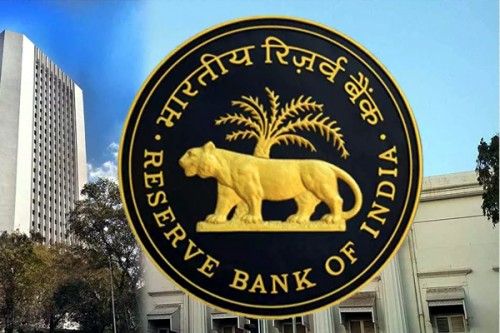RBI's MPC will not tinker interest rate, to maintain hawkish stance: Economists

Chennai, Sep 26 (IANS) The Reserve Bank of India’s (RBI) Monetary Policy Committee (MPC) will not change the repo rate at their meeting next month but would try to manage liquidity with various instruments it has, said senior economists.
Repo rate is the rate at which the RBI lends to banks and a hike will make the banks to increase their lending rates to their borrowers.
They also said the RBI will not change the repo rate this fiscal but would maintain a hawkish stance while the erratic monsoon would impact agricultural produce mainly rice and pulses resulting in inflation.
“We would expect a status quo on both repo rate and stance. The Inflationary environment is not yet congenial for considering any change here. In fact the OIS (Overnight Indexed Swap) rates indicates that repo could go up, but we believe that inflation while high at 6.8 per cent will come down in September to something closer to 6 per cent and remain in the downward direction subsequently,” Madan Sabnavis, Chief Economist, Bank of Baroda told IANS.
According to him, the liquidity situation is tight and hence there will be no incremental cash reserve ratio (ICRR) like move as the focus will be on ensuring that there is adequate liquidity in the market.
At their last meeting the MPC imposed ICRR of 10 per cent on deposits received by banks between May 19- July 28, 2023 sucking out about Rs1,00,000 crore of liquidity.
“Now that the Rs 2,000 notes have returned to the system, there may be a need for some open market operations to induce liquidity if the credit conditions so warrant,” Sabnavis added.
India’s central bank, the RBI, acts to control inflation through its monetary policies while the government does that through governance, infrastructure development that brings down the transaction costs and other ways.
RBI has been mandated to keep the inflation rate at 4 per cent.
Suman Chowdhury, Chief Economist & Head - Research, Acuite Ratings told IANS that RBI will continue to hold on to the pause button on the interest rates in the current scenario.
“While vegetable prices have moderated after July-August and the government has continued to take steps to cool down food prices, there are potential food inflation risks due to the erratic monsoon and its impact on the kharif output particularly rice and pulses. RBI MPC is expected to keep a close eye on not only the food prices but also on increased crude oil prices and its implications on the overall inflation curve,” Chowdhury said.
“Given that the inflation risks will continue to hover over the macro horizon for longer, we expect a prolonged pause upto Mar-24 from MPC. However, there will be a hawkish bias to the monetary policy and liquidity will be kept relatively tight through various available tools with RBI to minimise the upward pressures on inflation,” Chowdhury added.

|

|

